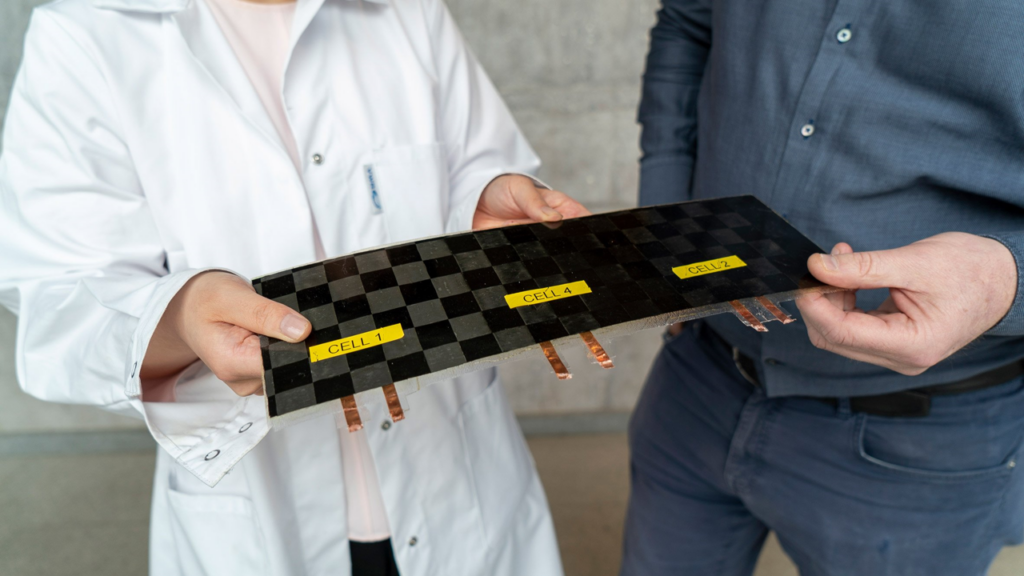Carbon-fibre material can store electrical energy

A spinout from Chalmers University, Sweden, has developed a carbon-fibre material that stores electrical energy and forms part of an EV’s structure, writes Nick Flaherty.
Sinonus is commercialising a conformal battery using the material that doubles as electrodes. It has demonstrated the potential of its technology by replacing AAA batteries in low-power products in its lab. It is expanding to EVs and aircraft.
It uses the conductivity of the carbon fibre developed by Oxeon, another Chalmers Venture company, which was used in the propeller blades for NASA’s Ingenuity helicopter on Mars. It was chosen by the engineering team for its ultralight weight and thinness.
Coated carbon fibres are used as the current collector at the anode, with a glass-fibre separator isolating them from the uncoated fibres used for the cathode. The electrolyte runs between the fibres, and the current is collected by an aluminium foil at the anode and a copper foil at the cathode.
Choice of coating is key to the battery’s energy density, including materials to generate the lithium ions. The carbon fibre can be optimised to provide a similar function to the graphite carbon used in existing battery cells.
For passenger aircraft to be powered by electricity, they need to be much lighter than they are today. Weight reduction is also vital for road vehicles, extending driving range per charge.
“Storing electrical energy in carbon fibre may perhaps not become as efficient as traditional batteries, but since our carbon fibre also has a structural load-bearing capability, very large gains can be made at a system level,” says CEO Markus Zetterström.
A study from Chalmers shows carbon fibre-based structural batteries could increase the driving range for lightweight EVs by 70%.
ONLINE PARTNERS































